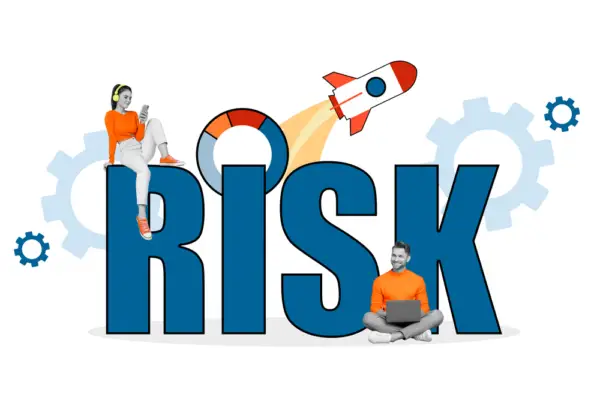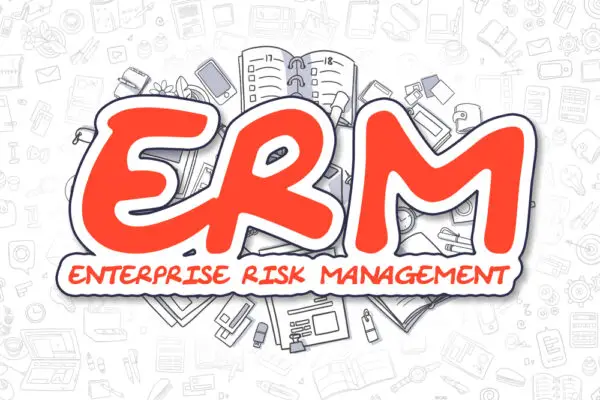A positive risk, also known as an opportunity, is a risk event that, if it occurs, will have a beneficial impact on project objectives. Unlike negative risks, which can cause harm or loss, positive risks are uncertain events that could potentially benefit your organization or project if they happen.
For instance, positive risks could be:
Technological advancements: An unforeseen technology advancement could make your project cheaper or faster to complete.
Unexpected resources: You may suddenly gain access to additional funding or high-quality resources, allowing you to improve the project’s quality or expand its scope.
Market changes: Changes in the market, like a new trend or a competitor leaving the market, could lead to new opportunities for your project or business.
Team Performance: Your team might complete tasks faster or more efficiently than planned, leading to an early completion of the project.
Regulatory changes: Sometimes, a change in legislation can open up new possibilities for your project or business.
Just like with negative risks, positive risks should be identified, assessed, and managed proactively. In project management, risk management strategies for positive risks include exploiting (making sure the opportunity happens), enhancing (increasing the probability and/or impact of the opportunity), and sharing (allocating some or all ownership of the opportunity to a third party).
In this article, we’ll discuss what positive risk is, its benefits, types, strategies for assessing it, and how to manage it.

What is Positive Risk?
Positive risk is a term used to describe taking a calculated risk that has the possibility of delivering a positive outcome.
In other words, it’s a calculated risk taken with the expectation that the reward will be greater than the risk taken. Positive risks can be taken in any area, from financial investments to career moves, and can be rewarding if the outcome is successful.
Positive risks can be planned out in advance, with a thorough analysis of the potential return on investment and an assessment of the risks involved. Taking positive risks can also involve taking advantage of opportunities that come up, such as a job offer or investment opportunity, without necessarily being able to predict the outcome.
Benefits of Positive Risk
Positive risks, or opportunities, are unexpected events that can lead to beneficial outcomes if they occur. They can provide several benefits for businesses or projects:
1. Enhanced Performance: Positive risks can lead to increased productivity or performance. For example, if your team is more efficient than anticipated, you could complete your project ahead of schedule.
2. Cost Savings: Opportunities may lead to cost savings. For instance, discovering a more efficient process or resource can decrease overall project costs.
3. Improved Reputation: Taking advantage of opportunities can improve your reputation with stakeholders. For example, completing a project ahead of schedule or under budget can increase customer satisfaction.
4. Competitive Advantage: Positive risks can give you a competitive advantage. For example, capitalizing on a new market trend before your competitors do could position your business as a leader in the industry.
5. Innovation and Growth: Positive risks often come with the chance to innovate, such as leveraging a new technology or adopting a new process. This can lead to business growth and expansion.
6. Increased Profits: All of the above benefits can contribute to increased profits for your business. For instance, cost savings, enhanced performance, and a competitive advantage can all lead to increased revenue.
They should be managed carefully to maximize their potential benefits while minimizing any potential downsides. This can be achieved through effective risk management practices, such as risk identification, assessment, planning, and monitoring.
Taking positive risks can open up opportunities that were previously unavailable, allowing you to explore new ideas and potential paths.This can often lead to success, as well as personal growth and development.
Positive risks can also help develop confidence and resilience in yourself and your team.Taking risks can also provide valuable lessons, helping you to understand and adapt to different situations.
Types of Positive Risk
Positive risk-taking can be divided into two main categories: short-term and long-term risks.
Short-term risks typically involve smaller investments of time or money, such as starting a new hobby or taking a class in a new subject. These risks can lead to learning new skills or pursuing a new interest, which can have positive outcomes.
Long-term risks involve larger investments of time or money, such as starting a new business. These risks can lead to a higher level of success and can also bring about greater personal satisfaction.
Strategies for Assessing Positive Risk
The best way to assess it is to first determine the potential reward to be gained.
The objective is to identify and analyze these opportunities, determining their likelihood and potential impact, and how they might be best harnessed. Here are some strategies for assessing positive risk:
1. Risk Identification: This is the first step in the process and involves recognizing potential opportunities that may affect the project or organization. Tools like brainstorming sessions, SWOT analysis (Strengths, Weaknesses, Opportunities, Threats), or expert consultations can be employed.
2. Risk Analysis: Once risks are identified, they should be analyzed in terms of their potential impact and the probability of their occurrence. Consider both qualitative (descriptive) and quantitative (numerical) analysis methods.
3. Prioritize Risks: After analyzing the opportunities, prioritize them based on their potential impact and likelihood. This can help to focus on high-priority risks and allocate resources effectively.
4. Response Planning: For each identified opportunity, develop a plan to exploit or enhance it. Options include:
- Exploit: Make changes to ensure the opportunity is realized.
- Enhance: Increase the likelihood or positive impact of the opportunity.
- Share: Allocate some or all ownership of the opportunity to a third party.
- Accept: Decide to be ready to take advantage of the opportunity if it occurs, but not take any action to pursue it proactively.
This might also include factors like the resource cost, time investment, and other factors that may influence the potential outcome. Additionally, it’s important to look at the potential risks associated with the decision.
This could include the possibility of failure, potential opportunity costs, and any other risks that could impact the success of the decision. It’s important to consider all of these factors in order to make an informed decision that could lead to a successful outcome.

Managing Positive Risk
The first step in managing positive risk is to create a plan that outlines how you will respond to potential opportunities and threats. This plan should include specific steps for mitigating or maximizing potential benefits. It should also identify any resources or support needed to help you reach your goals.
Once the plan is in place, you can then begin to take action. This may involve training, changing processes, or allocating resources in order to maximize the potential benefits.
Additionally, you should regularly monitor the situation and adjust your plan as necessary.

Conclusion
Positive risk, often referred to as an opportunity, is an unexpected event or situation that can bring beneficial outcomes to your business or project. From strategic to operational, financial, technological, compliance, environmental, and reputational risks.
Positive risks present a myriad of opportunities for growth, innovation, cost savings, and competitive advantage. Crucially, identifying, analyzing, prioritizing, and planning for these positive risks, coupled with consistent monitoring and review, ensures that your organization is well-positioned to exploit these opportunities effectively.
Remember, the successful management of positive risks requires an understanding of your business environment, strategic agility, and proactive engagement. After all, positive risk is not just about managing uncertainty—it’s about embracing it as a potential path to success.

Chris Ekai is a Risk Management expert with over 10 years of experience in the field. He has a Master’s(MSc) degree in Risk Management from University of Portsmouth and is a CPA and Finance professional. He currently works as a Content Manager at Risk Publishing, writing about Enterprise Risk Management, Business Continuity Management and Project Management.

